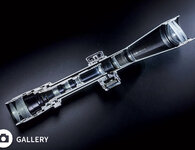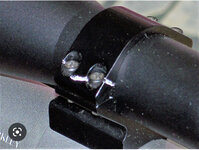Billy Goat
“MOMMY”
Think in terms of the "equal and opposite reaction" goes somewhere. Despite the lead sled not seeming to move, the recoil pad would have some give and that puts a lot of stress into the rifle and scope attached to it. The same recoil energy is spread over a small fraction of time compared to shooting off bags. More peak force of deceleration.
It's equal and opposite, but if it doesn't have enough energy to overcome what is holding it, then there's no movement.
Possibly the recoil pad would allow some movement, but I think the real dangers are to the stocks around recoil lugs and pillars.


